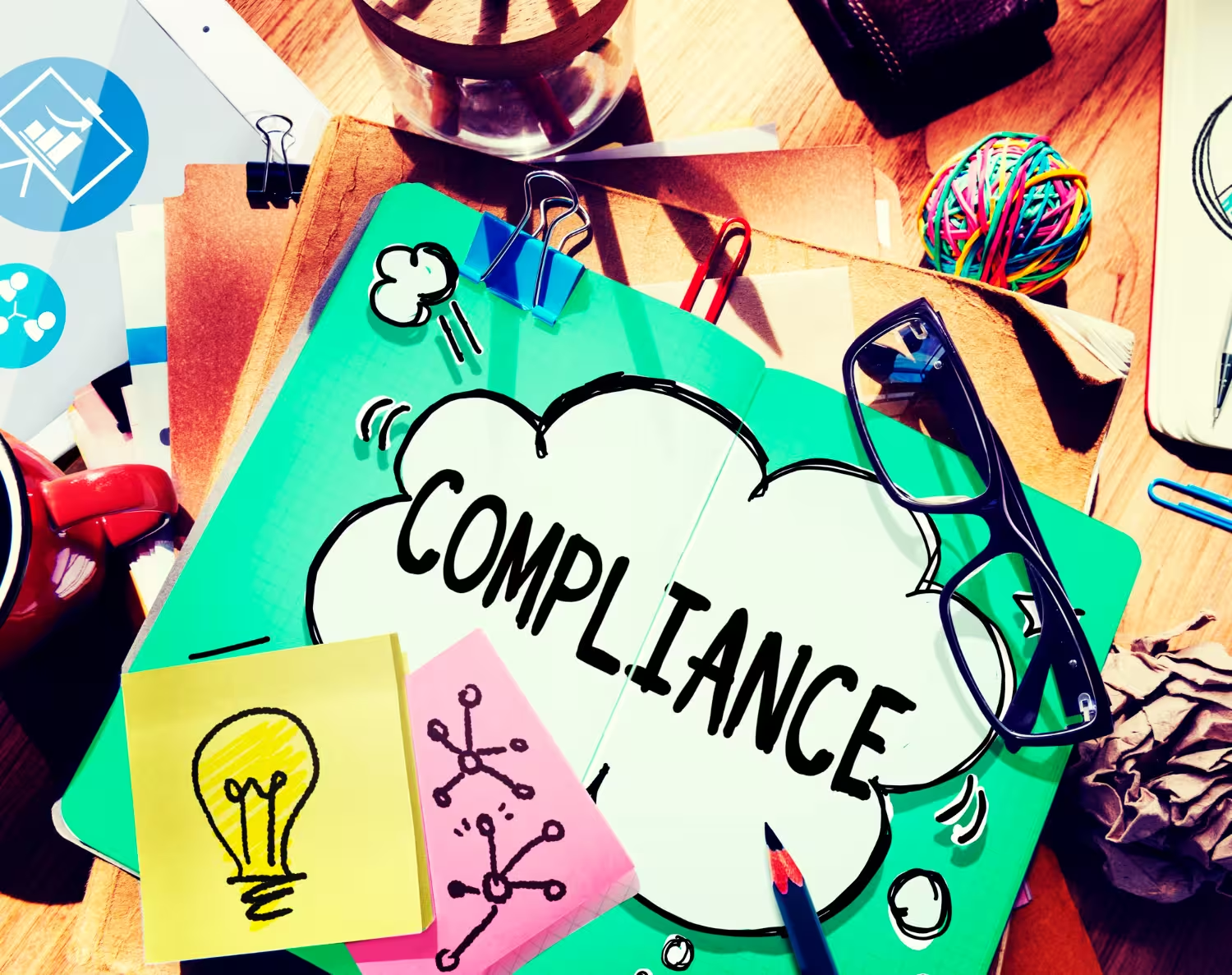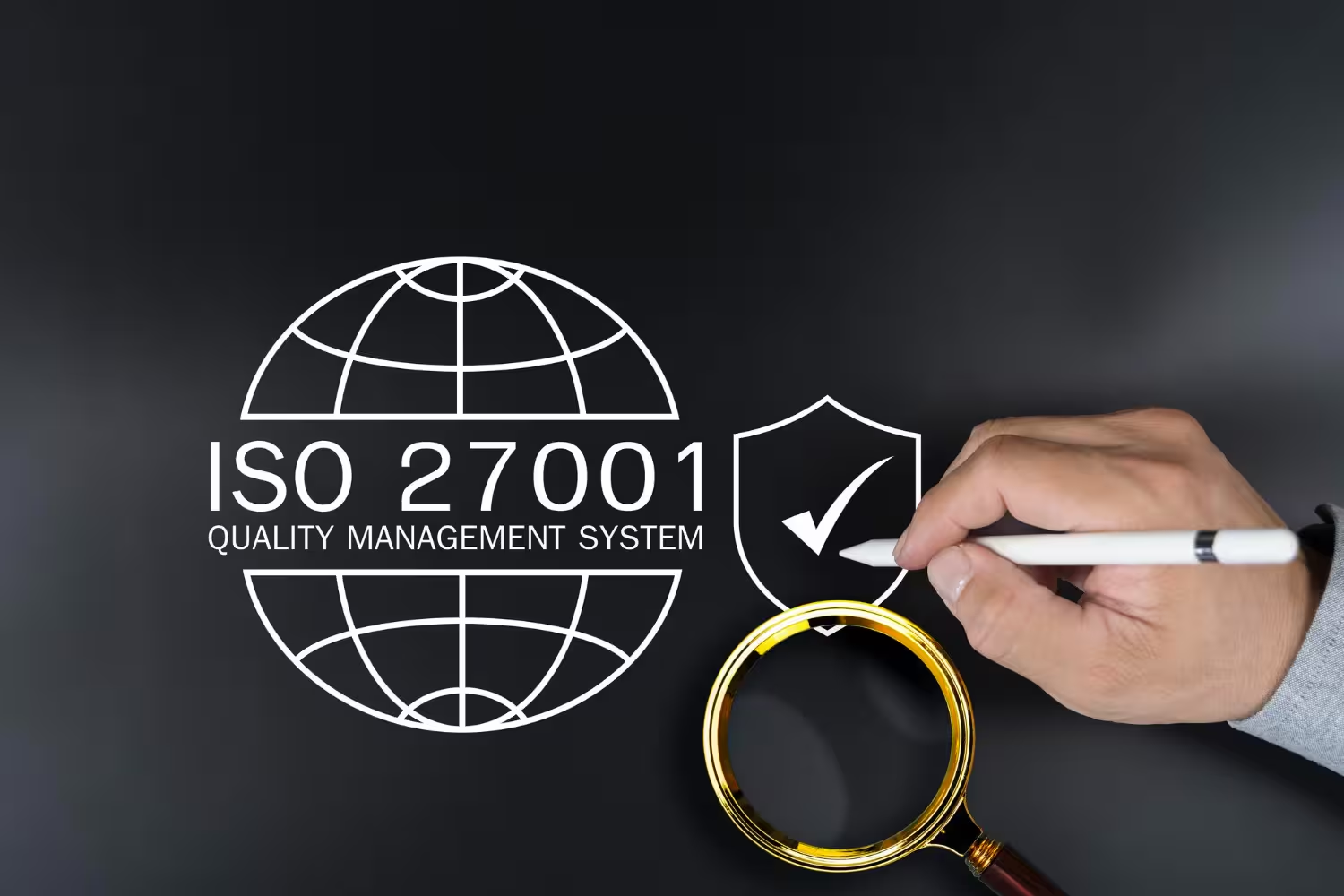[ANSWERED] Why is Cultural Competence Important?
Today, we’re going to discuss why it is so important to foster a culturally diverse work environment. We will dive into the different parts of cultural competence. As well as how a lack of diversity can hurt your organization, and more. Let’s get into it!

According to Cloverpop, more diverse teams make better decisions 87% of the time. The word “diverse” in this case refers to age, gender, and geographic diversity.
As an employer, providing a space for open communication and mutual respect for everyone is vital. It’s also one of the many ways to practice cultural competence in the workplace. Emphasizing this value within your company supports a productive and collaborative work environment.

So, what exactly is cultural competence?
Society defines it as the capacity and willingness of someone to work and interact with another from a different culture. The ability to develop meaningful relationships with people with different religions, nationalities, languages, and more. In our technological world, more than ever people are likely working with others from different cultures.
To successfully train your staff to uphold these values, incorporating yearly diversity training is key.
Today, we’re going to discuss why it is so important to foster a culturally diverse work environment. We will dive into the different parts of cultural competence. As well as how a lack of diversity can hurt your organization, and more. Let’s get into it!
What is Cultural Competence?
We spoke on this already, but let’s get into the meat and potatoes of what cultural competence consists of. Being able to work with others who come from various cultural backgrounds is the foundation of this concept.
Again, these cultural differences can include beliefs, customs, and behaviors. It is a lifelong process, of accumulating cultural competence through self-awareness and developing communication skills. It is an ability that serves both inside and outside of the office.
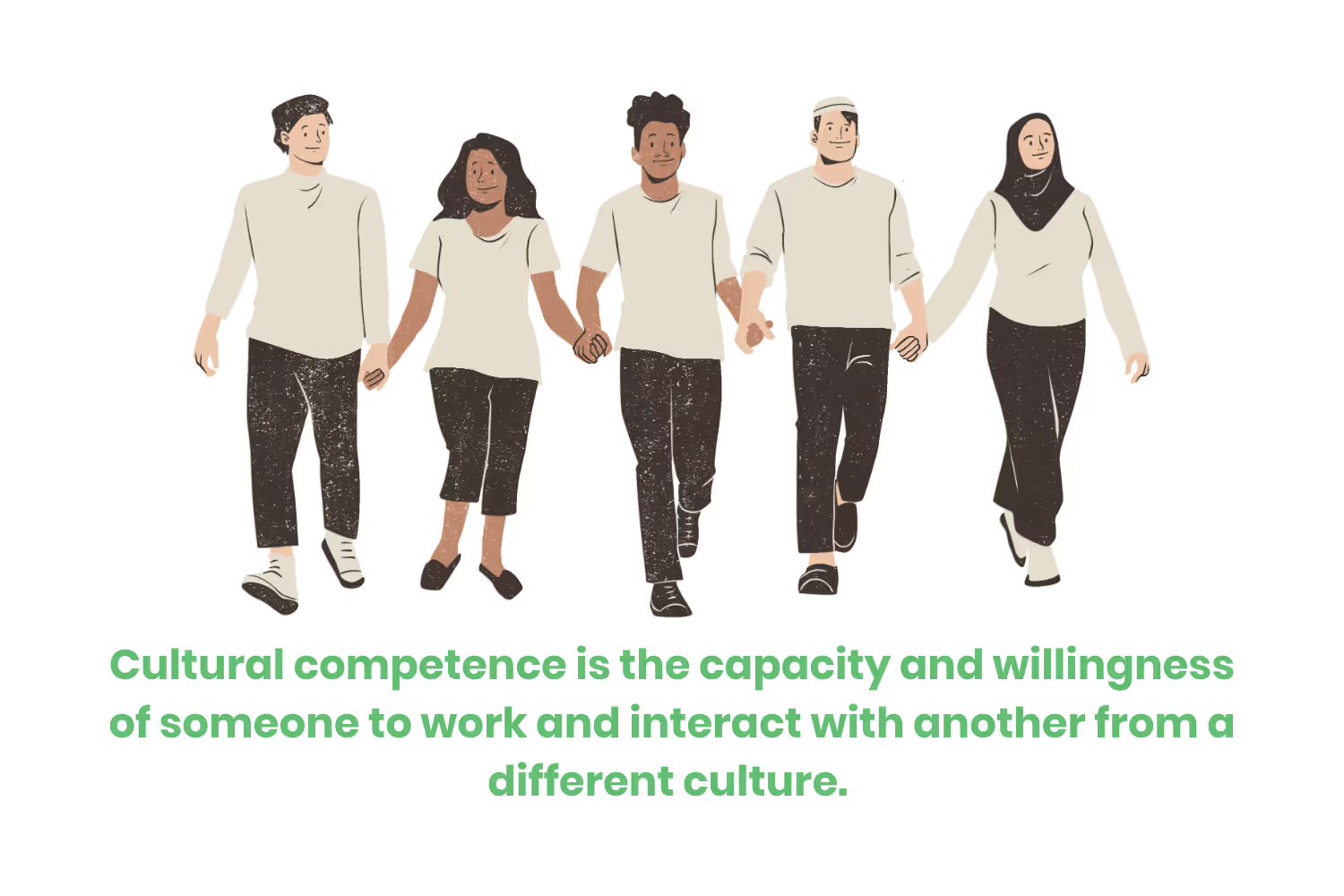
Organizations practicing cultural competency must go beyond simply instilling tolerance among employees. This insinuates that people should just overlook differences.
Organizations must practice respecting and recognizing all cultural differences. This way, there is a sense of inclusion and acceptance amongst all employees. If your employees feel comfortable being themselves in the office, you can expect better communication and collaboration. This includes within the team and with clients or partners.
7 Essential Components of Cultural Competence
According to Diversity Resources, there are seven essential components of cultural competence. Any person in a leadership position should consider these.
First, let’s talk about ‘beliefs and worldview’. To put it simply, this is how different people view the world and how they see themselves in it. This can include religious beliefs, as well.
‘Communication’ style is the next component. This emphasizes the cultural differences in how people communicate. Some might be more direct than others, for example.
Third, and sort of within the same vein, is ‘formality’. Manners and etiquette while communicating with others might be different from one culture to the next.
Signs of respect may be different as well, bringing us to the component ‘hierarchy’. Not all cultures see social structure as vertical. Some might view social hierarchies as horizontal instead. More so like everyone is on the same playing field, not one person is more important.

‘Perception of time’ is another element of cultural differences to be aware of. This one might sound kind of strange, but people may have different timelines when it comes to their goals.
Some employees may have a more fixed or flexible professional schedule.
Which ties into the next component, ‘values and priorities’. One person might need a more flexible schedule. For example, maybe they heavily value work-life balance and family. Others may prioritize different values and not require the same flexibility.
Finally, we have ‘uniqueness and individuality’. To wrap up this list, we will end on how everyone, regardless of background, is unique. It is important to view your employees as individuals, and not hold them to predetermined guidelines.
Following these elements will help you, as an employer, by building empathy and understanding of how others approach their own professional experiences.
Why is Cultural Competence Important?
We touched on why this concept is important in the workplace. Namely, having cultural competence opens the floor for better collaboration and productivity. But why is that?
It’s because our society is increasingly becoming more diverse and globalized. The United States in particular has undergone major shifts in its population demographics. Nearly 40% of Americans identify with a race or ethnic group other than white.
With our society being so ethnically diverse, we need to be able to interact and communicate within the workplace effectively.
Technology also serves as a tool for facilitating interactions. Especially between people of different cultural backgrounds. After all, people can now regularly interact with others across national borders. This opens the floor for more international collaboration in the workforce.
Many industries and large businesses regularly see international business interactions. Another reason to emphasize the importance of workplace cultural competence.
Many universities now incorporate cultural awareness into their higher education curriculum. This is to prepare students for jobs dealing with international experiences. But also for everyday interactions in the workplace.
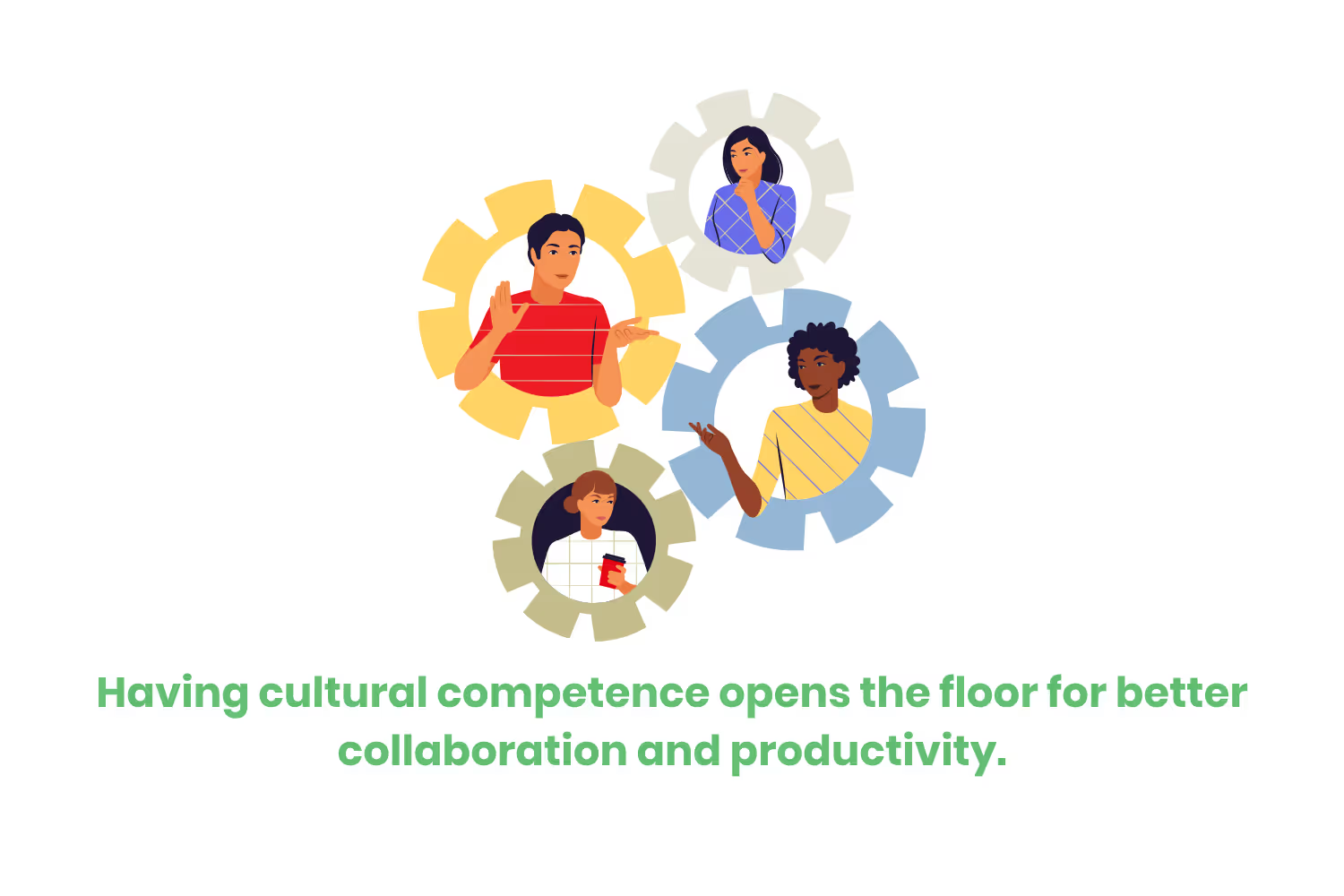
Cultural Competency in Action
Like I said before, learning to tolerate different cultures is a start. But tolerance should not be the end goal here. It’s the bare minimum. Simply having tolerance for different cultures insinuates “putting up with” differences.
When instilling cultural competence in your organization, there should be an emphasis on appreciating and affirming all cultural backgrounds.
Let’s go over three important elements to include in your cultural competence training. Active listening, demonstrating empathy, and effective engagement.
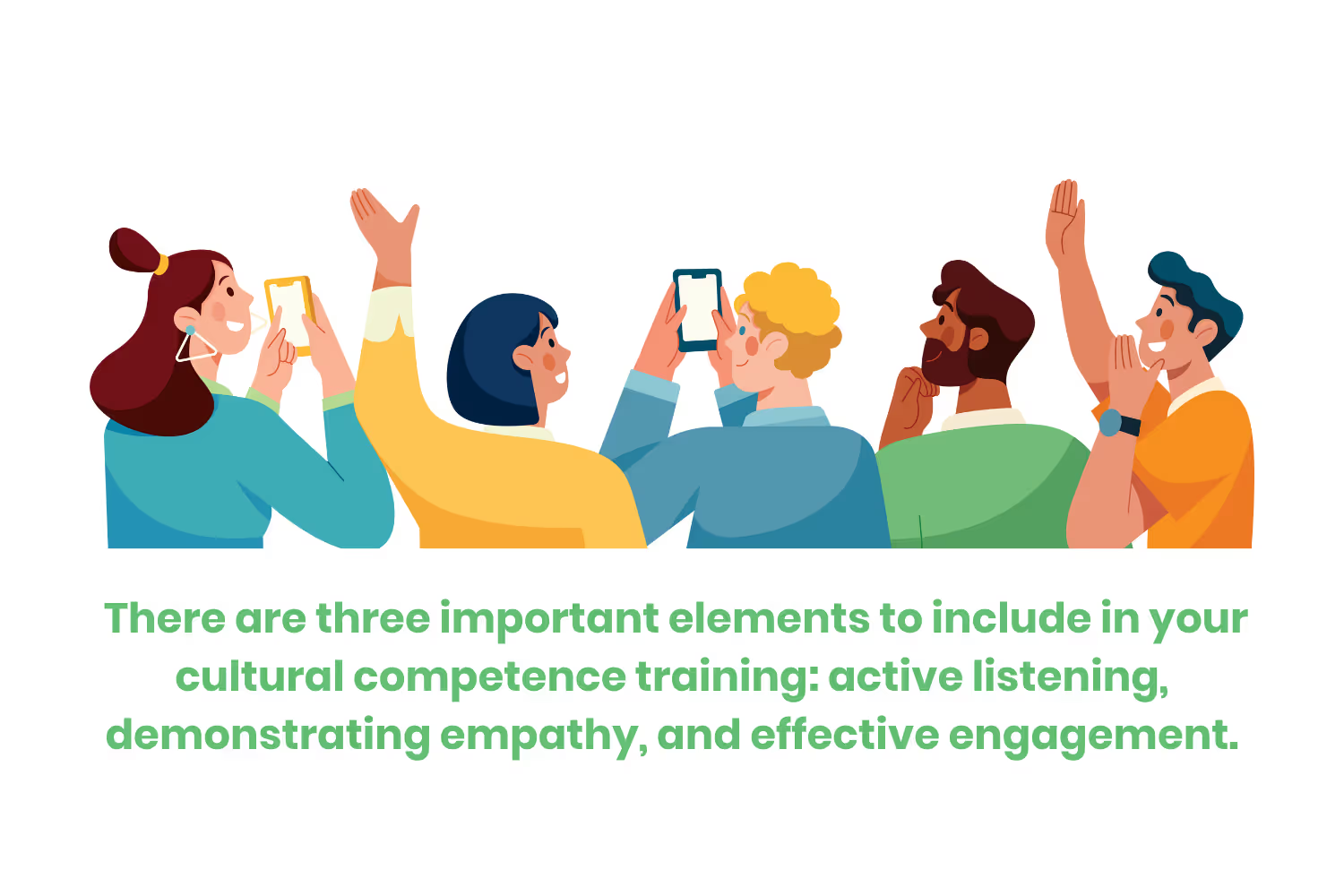
Active Listening
When interacting with a coworker, you should practice active listening. In general, you should do this when talking to anyone.
Have you ever had a conversation with someone, and while you’re talking you can tell their attention just kind of…. drifts away from what you are saying? Doesn’t feel great. This is especially important when making meaningful connections with people of different cultures.
Make sure to listen for the total meaning of what someone is saying. Avoid mental distractions, like thinking about how you are going to respond to what the person is saying.
This doesn’t allow you to fully connect with an individual, or pick up on not only what is being said but ‘how’ it is being said. Acknowledging emotion gives you an inside look at the real intent of the conversation. This will help you identify whether someone’s upset, inquisitive, and so on.
This, in turn, allows you to appropriately respond to your coworkers when you might not understand their beliefs or point of view.
Even beyond the cultural competency benefits associated with active listening it comes in handy. Especially when you consider that 64% of HR professionals view it as the most critical leadership skill.

Empathy
Demonstrating empathy is the art of seeing and feeling the situation of someone else. Being able to walk in another person’s shoes.
By listening and practicing empathy, you can better understand someone’s perceptions, which come from their own life experiences. Of course, you do not have to agree with the other person’s conclusions.
But it leaves you in a position to see the other person’s point of view. This leads to better collaboration and communication between those who may not see eye to eye on certain issues.
Engagement
Effective engagement is the third component you should incorporate in your company training. This engagement between you and your employees should be mutually beneficial. A learning experience on all sides.
Take the time to learn from each other while making sure to focus on behaviors and situations, not the person.
For example, if the conversation is about a certain belief, keep your feedback solely about that. Don’t say that someone is being silly for their belief. Instead, voice that you don’t understand this particular belief.
This offers both parties the opportunity to have a constructive conversation. As well as learn something from each other. So that future interactions go more smoothly. Avoiding value-laden statements that target individuals.
Conclusion
With cultural diversity in the workplace on the rise, understanding how to navigate our globalized society is key. By including the components mentioned above, annual training lays the foundation for creating a welcoming environment. It helps establish appreciation and acceptance of similarities and differences between cultures.
The end goal is to understand and appreciate diversity in all forms. As well as to learn how to communicate effectively with people, no matter their background. Enforcing this in your workplace will lead to better team collaboration and productivity.
Emphasize your product's unique features or benefits to differentiate it from competitors
In nec dictum adipiscing pharetra enim etiam scelerisque dolor purus ipsum egestas cursus vulputate arcu egestas ut eu sed mollis consectetur mattis pharetra curabitur et maecenas in mattis fames consectetur ipsum quis risus mauris aliquam ornare nisl purus at ipsum nulla accumsan consectetur vestibulum suspendisse aliquam condimentum scelerisque lacinia pellentesque vestibulum condimentum turpis ligula pharetra dictum sapien facilisis sapien at sagittis et cursus congue.
- Pharetra curabitur et maecenas in mattis fames consectetur ipsum quis risus.
- Justo urna nisi auctor consequat consectetur dolor lectus blandit.
- Eget egestas volutpat lacinia vestibulum vitae mattis hendrerit.
- Ornare elit odio tellus orci bibendum dictum id sem congue enim amet diam.
Incorporate statistics or specific numbers to highlight the effectiveness or popularity of your offering
Convallis pellentesque ullamcorper sapien sed tristique fermentum proin amet quam tincidunt feugiat vitae neque quisque odio ut pellentesque ac mauris eget lectus. Pretium arcu turpis lacus sapien sit at eu sapien duis magna nunc nibh nam non ut nibh ultrices ultrices elementum egestas enim nisl sed cursus pellentesque sit dignissim enim euismod sit et convallis sed pelis viverra quam at nisl sit pharetra enim nisl nec vestibulum posuere in volutpat sed blandit neque risus.

Use time-sensitive language to encourage immediate action, such as "Limited Time Offer
Feugiat vitae neque quisque odio ut pellentesque ac mauris eget lectus. Pretium arcu turpis lacus sapien sit at eu sapien duis magna nunc nibh nam non ut nibh ultrices ultrices elementum egestas enim nisl sed cursus pellentesque sit dignissim enim euismod sit et convallis sed pelis viverra quam at nisl sit pharetra enim nisl nec vestibulum posuere in volutpat sed blandit neque risus.
- Pharetra curabitur et maecenas in mattis fames consectetur ipsum quis risus.
- Justo urna nisi auctor consequat consectetur dolor lectus blandit.
- Eget egestas volutpat lacinia vestibulum vitae mattis hendrerit.
- Ornare elit odio tellus orci bibendum dictum id sem congue enim amet diam.
Address customer pain points directly by showing how your product solves their problems
Feugiat vitae neque quisque odio ut pellentesque ac mauris eget lectus. Pretium arcu turpis lacus sapien sit at eu sapien duis magna nunc nibh nam non ut nibh ultrices ultrices elementum egestas enim nisl sed cursus pellentesque sit dignissim enim euismod sit et convallis sed pelis viverra quam at nisl sit pharetra enim nisl nec vestibulum posuere in volutpat sed blandit neque risus.
Vel etiam vel amet aenean eget in habitasse nunc duis tellus sem turpis risus aliquam ac volutpat tellus eu faucibus ullamcorper.
Tailor titles to your ideal customer segment using phrases like "Designed for Busy Professionals
Sed pretium id nibh id sit felis vitae volutpat volutpat adipiscing at sodales neque lectus mi phasellus commodo at elit suspendisse ornare faucibus lectus purus viverra in nec aliquet commodo et sed sed nisi tempor mi pellentesque arcu viverra pretium duis enim vulputate dignissim etiam ultrices vitae neque urna proin nibh diam turpis augue lacus.



